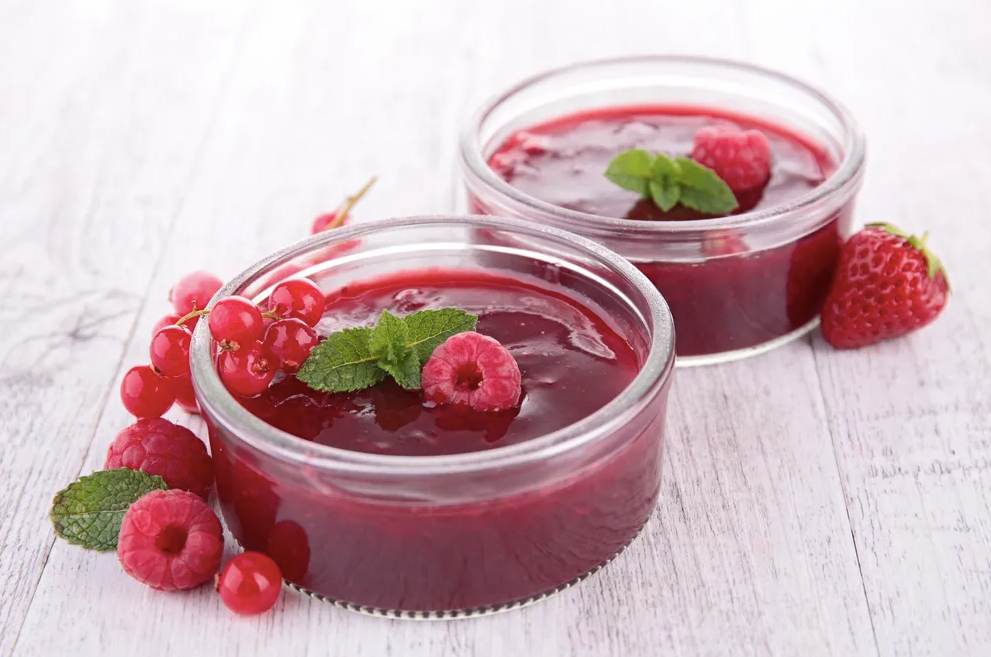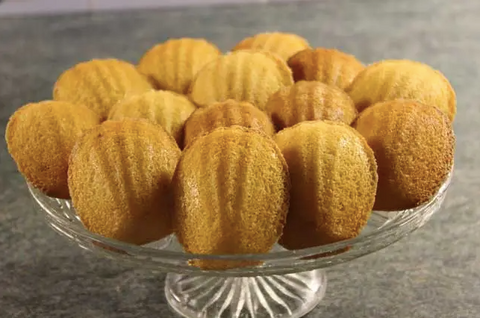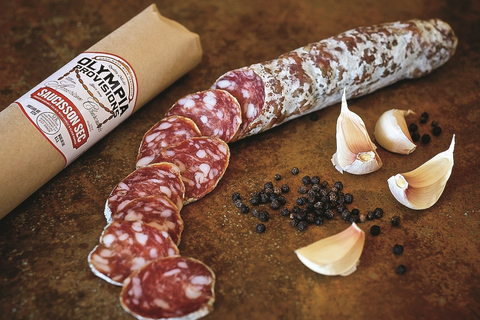Do you think French food is a touch too fiery for a home cook to handle? Perhaps you might consider it. Learning a few simple French culinary methods will help you save time, produce healthier dishes, and take your cooking and dining pleasure to new heights! Many people associate French cuisine with Michelin-starred chefs and opulent dining establishments. This primer will help you master some of the important processes that lead to organized meal preparation and delicious, easy meals, regardless of your skill level.
Attitudes toward cooking in France
While French cuisine may appear to be difficult, it is just a lot of common sense written down in a logical series of skills that have been passed down through generations. Dishes are made by layering flavors to complement a central feature pleasingly. However, the key to appreciating the diversity of French cuisine is to keep things simple.
Each strategy is utilized to accomplish a certain goal, and each goal has its own set of requirements. Braising, poaching, sautéing, and other techniques are utilized in recipes because they yield the greatest results for the ingredients. In contrast, French cooking is about more than just mechanics and logic. It's a culinary festival with audience participation; it's all about the delight of organizing a meal and then sharing it with friends and family (or just your own wonderful company).
In contrast to the frenetic dinner preparation that many of us face daily, French cooking is a way to unwind at the end of the day and appreciate the simple pleasures of family and food. Don't forget about the wine, too! The art of French cooking, like any excellent skill, is mastered one step at a time, with practice leading to confidence. As a result, we've put up a glossary of 11 culinary concepts, as well as cutting techniques, flavoring procedures, sauce foundations, and a variety of quick and easy entrée preparation methods.
8 Must-Know French Cooking Methods
1. Bouquet Garni
A garnish bouquet is exactly what it sounds like. It's a savory herb blend that's used to flavor stocks, casseroles, stews, and soups. The bouquet is added to boiling dishes to enhance the flavor before serving, and then removed. Most bouquets contain fresh herbs; however, dried herbs can also be utilized. A dried form also allows you to employ some difficult-to-tie materials, such as juniper berries or peppercorns. As a result, there are two ways to get them ready for the pot. Three sprigs of parsley, two sprigs thyme or rosemary, and one bay leaf, all with long stems, are the classic fresh herb combination. Wrap the stems with unwaxed kitchen twine and tie a long loop tail at the end. Because of the tail, the bouquet may be easily collected and discarded when the cooking time is up.
“A 12-by-12-inch piece of muslin or cheesecloth is required for dried herbs. To form a small square, fold the cheesecloth in half and then again do same. Fill the square's center with your dried herb mixture. 1 bay leaf, 4-6 peppercorns, 1 teaspoon thyme, and 1 tablespoon parsley are a decent starting point. Gather the square's corners and tie them into a sachet using kitchen thread, leaving a long tail to extract it from the pot. The herbs can, of course, be changed to suit any recipe. Oregano, sage, savory, and tarragon can enhance any scent.”

2. Chiffonade
Shredding or carefully slicing flat herbs and green vegetables like lettuce, basil, or spinach into very fine ribbons is done with the chiffonade cut. This method is used to cut thin, consistent strips from fresh meals with a lacy appearance and uniform taste distribution.
“Depending on the things to be diced, there are two primary chiffonade procedures. The first approach involves stacking leaves on top of one another, tightly folding or rolling them, and then cutting them perpendicular to the roll with a reverse slice. For leaves without a tough center stem, this is the best option. Make a compact stack of leaves with one edge fastened with your fingertips for leaves with a strong core stem. Start slicing finely on the opposite edge until you reach the stem, then spin the stack and repeat until you reach the stem once more, which you can discard.”
“The rear slice is the best cutting stroke for making the very fine slices of a chiffonade cut. Place the front edge of your knife on the cutting surface at a slight angle directly above your leaf stack. Rest the flat of the blade on your knuckles while holding the stack in a claw grip. Slowly pull the blade back until the tip of the blade slices through the ingredients, then return to the starting position. Continue to use narrow strokes until the desired result is achieved. The rear slice requires keeping the knifepoint on the cutting surface and using a motion similar to that of a hand saw - little up and down movement, only a small amount of wrist action to push and draw the knife.”
3. Coulis
“A coulis is a thick, colorful sauce created with only one basic ingredient, such as raspberries. It's drizzled on desserts, used as a savory condiment, and even flavor-added to sauces — and it's frequently arranged on a serving plate like a string of gems. The ingredients, which are made from herbs, vegetables, or fruits are cooked, puréed, and sieved before serving.”
“Mint, chile peppers, apricots, roasted bell peppers, lavender, plums, and fresh berries are just a few of the things that could be used. The ingredients are simple to prepare and simmer for around five minutes with a little water. Everything goes into a blender to be puréed after a few minutes of chilling, and then strained through a fine chinois or mesh sieve. Your food can be spooned or poured over the top once it's been prepared.”
A coulis can be served cold or warm and it will last three days in the fridge or three months in the freezer. During the heating process, sugar and sometimes a splash of vanilla or almond extract are commonly added to berry and fruit coulis. To enhance the flavor of vegetable coulis, herbs, seasonings, and spices are commonly utilized. Coulis is a lovely finishing touch to a dish that adds color, flavor, and panache.
4. Déglacer
“Déglazing fond, which is a layer of caramelized liquids and fats that accumulates on the bottom of a pan during cooking, is a procedure for releasing or deglazing fond. A tiny amount of liquid is added to the pan and brought to a low boil, such as water, stock, or wine. The bottom is lightly scraped and then swirled to dissolve the fond while it simmers. After the fond has been dissolved, the liquid can be utilized to make a savory pan sauce or reduced to a demi-glace to serve with the main dish. Read more about how to cook with wine efficiently and our entire guide on deglazing a pan if you want to acquire a little more confidence with this approach.”
5. Julienne
“A julienne cut is a knife method for cutting things, mainly vegetables, into uniform, tiny rectangles that resemble matchsticks. It's usually used to brag about you. Because the small parts fry as quickly as equal-sized vegetables, it's frequently used on proteins in stir-fries. If required, peel the vegetables, then trim the stem and root ends before julienne. Rounder vegetables, such as zucchini or carrots, should be cut in half lengthwise and stabilized by placing the flat side on the cutting board, then trimming the remaining three sides until you have a flat, four-sided block.”
“At this point, cut the block into two-inch sections. Although this is the most frequent length, julienned veggies can be any length. Just remember that anything longer than two inches will be more difficult to consume. After that, cut the rectangle into 1/8-inch slats and stack a couple on top of each other. The larger the stack, the more probable triangles will form instead of rectangles. Slice the slats into 1/8-inch matchsticks once the time has come.”
“Use the slicing technique to julienne, which employs the sweet spot on the cutting edge of a chef's knife around 3 inches in from the heel. Starting with the knife tip's cutting edge on your cutting board and the remainder of the blade above the food, use a claw grip to hold the components. Allow the blade to fall in a straight line through the components until it reaches the cutting surface. Push forward as soon as contact is made to slice cleanly with the sweet spot. Rep the drop and push action to adjust the tip for the next cut. A mandoline with a julienne blade can come in helpful if you require a lot of julienned vegetables at once.”
6. Mirepoix
A mirepoix is a stewed or braised vegetable mixture often made composed of onion, celery, and carrots. Many cuisines around the world employ a trio of excellent veggies as a foundation. In Spanish and Italian food, garlic, onion, and tomato are common, as are scallions, ginger, and garlic in Chinese cuisine. Apart from the French variant, the Creole mirepoix (onion, celery, and bell pepper) is probably the most well-known. In locations with a heavy Catholic influence, such as Louisiana, where it may have originated, this combination has been termed the "Holy Trinity."
Casseroles, fish, stews, stocks, poultry, and meat all benefit from them. Seasonings and herbs are typically blended with diced vegetables in a 2:1:1 ratio (two parts onion, one part celery, and one part carrot). The cut size is determined by the cooking time and how the mirepoix will be used.
“A small dice of 1/8 or 1/4 inch would be good as a bed for pan-cooked fish, for example, to cook fast and release odors in conjunction with the short processing time for fish. Chunkier portions of 1/2 to 3/4 inch are a better time fit and will offer more body to a stew or soup that requires 1-2 hours on the stove. In a long-simmering pot of stock, halved or quartered vegetables are perfect for releasing flavors softly.”
7. Mise en Place
The term "mise in place" is derived from the French and means "to place." Both interpretations are correct because mise en place requires preparing your components and building good preparation habits. It all starts with a careful review of a recipe from beginning to end. I'm not talking about skimming a recipe; I'm talking about reading it completely.
After reading this, you'll know what ingredients and equipment you'll need, as well as if you can begin cooking right away or if you'll need to go shopping. Start at the beginning and work your way through the recipe. Prepare according to the recipe's instructions, placing all ingredients and activities on the stove or counter in the order they appear. Clean the herbs and vegetables by rinsing and chopping them. Parts of seasonings and spices are separated. After the fish has been deboned, the meat is tenderized.
Cans and pans have been oiled after being opened. Cooking should begin only after all of the prep work has been completed. Everything is in its proper position, so there are few mistakes and no frantic searching for what you require. Cooking becomes an experience of joie de vivre (exhilaration) rather than sacre bleu when mise en place is used.
8. Sauté
To sauté, the chef lightly cooks the ingredients over high heat in a small amount of oil or heated fat, shaking the pan to make the components jump and prevent sticking. Sauté is a ballet phrase for a jump straight up in the air followed by a landing in the same position as when the dancer started — the parallels to what happens in the kitchen are obvious. To maintain efficiency, food must be moved around continually while cooking, whether by shaking the pan, turning the contents, or tossing and swirling.
“A sturdy sautés pan with a big bottom and straight sides is ideal for the job. The ingredients stay in the pan and don't slop over the edges as they would in a skillet or frying pan because of all the flipping, tossing, and shaking. The large bottom also helps to ensure that all items brown evenly. Deglaze the pan with wine, apple juice, stock, or a splash of water once the ingredients have done processing creating a gorgeous, light sauce to end your dish.”
“When you sauté vegetables with a protein, you get a quick, delectable supper that's perfect for weeknights or any other time you're short on time. But sautéing beef is one of my favorite things to do. Meats such as chicken, beef, and pig can be seared on the exterior while remaining moist and delicious inside. Poulet saute a la paysanne Provencale is an example of this technique in our rustic French cuisine.”




